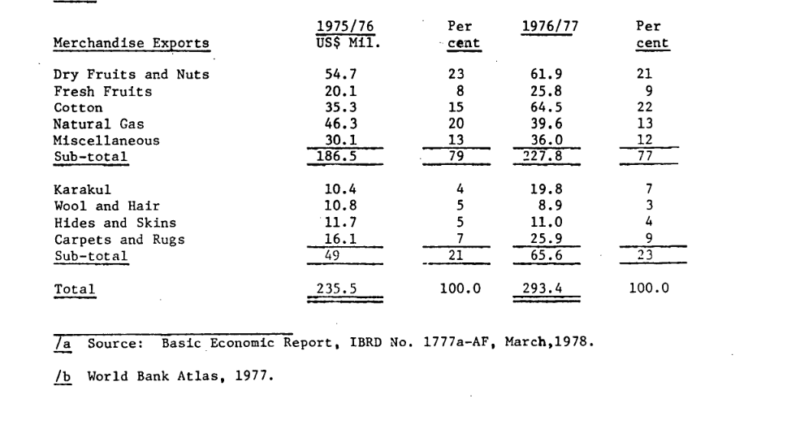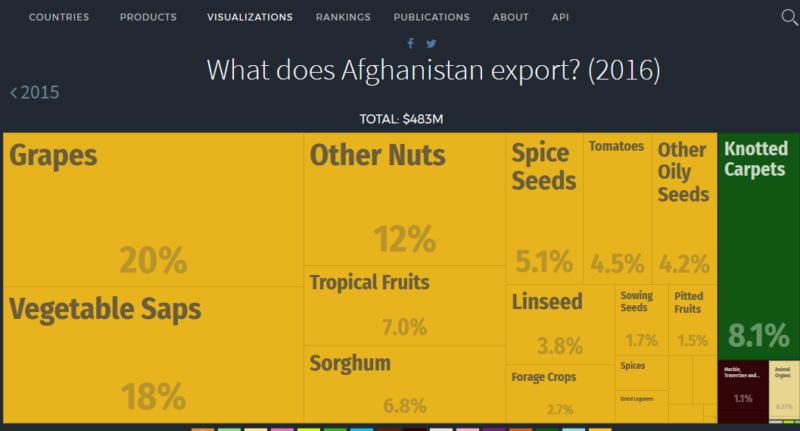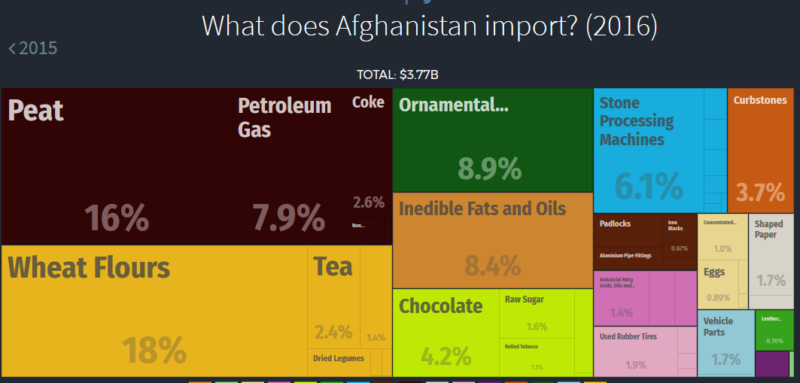By Saman Abas
MAZAR-I-SHARIF, Afghanistan: Endless war and unchecked corruption are grave concerns but negative economic growth, eroding agriculture, absence of livestock products and trade deficit are major factors for crumbling Afghan economy; pushing Afghan economy into deep ravine of poverty.
A World Bank Report published in 1979 indicates that Afghan economy was much promising in 1977-1978 and 1979 than today. In 1979, livestock products including carpets and rugs, accounted for 25% of GNP (Gross National Product) and 23% of exports (1976/77, US$65.6 million) of Afghanistan.

It is pertinent to mention that Afghanistan used to export live sheep to neighbouring countries – Iran and Pakistan – and rough estimation of such unregistered livestock products annual export was over US$33 million. One can read World Bank Report to compare today’s Afghanistan with that was in year 1979.
Despite getting over $11 billion through foreign funding and aids in Agriculture and Livestock sectors since 2002, neither Agriculture nor Livestock sector reached the level where they were in year 1979. Much promoted Country Programming Framework (CPF) of Food and Agriculture Organization (FAO) for the period 2012-2015 did not work well to enhance productivity in Agriculture. The CPF 2012-2015 was kicked off with $3.28 billion.
According to data of 2016, exports of goods and services stand 6.90% of GDP while imports of goods and services stand 49.03% of GDP.

In 2016, Afghanistan exported $482 million and imported $3.77 billion, resulting in a negative trade balance of $3.29 billion.

The top exports of Afghanistan are grapes ($96.4 million), vegetable saps ($85.9 million), other nuts ($55.9 million), knotted carpets ($39 million) and tropical fruits ($33.9 million).
Its top imports are wheat flours ($664 million), peat ($598 million), ornamental trimmings ($334 million), inedible fats and oils ($316 million) and petroleum gas ($296 million).
Export data collected through official channels of Afghanistan indicates that Afghanistan exported products amounting $482 million in 2016. However, sector of Livestock products now stand in “Import” balance sheet instead of “Export product”. Today, Afghanistan is importing livestock product including sheep, chicken, meat and beef from Iran, Pakistan and Central Asian countries.
Latest data indicates that overall export has been dropping since last five years and exports of Afghanistan have decreased at an annualized rate of 15.486%, from $531 million in 2011 to $482 million in 2016. The most recent exports are led by grapes which represent 20% of the total exports of Afghanistan, followed by Vegetable Saps which account for 17.8%. Since grapes, vegetables and tropical fruits are perishable items therefore 43% of exportable products links with weather condition and mobility to realize the product into gains (cash).
Grapes export sheet indicates that neighbouring Pakistan is biggest buyer with 46% share and India buys 39% share of export of grapes.
Vegetable export sheet shows that India is buying 57.1% while Pakistan takes 42% (mostly tomatoes).
Overall export sheets shows grapes 20% ($96.4 million), vegetable 18% ($85.9 million), Nuts – dry fruit 12% ($55 million), tropical fruits 7% ($33 million), sorghum 6.8% ($32 million). India is biggest buyer of sorghum and tropical fruits (96% of sorghum and 97% of tropical fruits).
Afghanistan is a semi-arid country where rainfall is very rare and only affects the northern highlands. The country had been a major producer of sheep and goats before Afghan-Soviet Union started in early 80s. Livestock products continued to play a major role in its economy till 2001 when the United States bombed Afghanistan to throw Taliban out. The shape of Afghan economy changed after 2001 and Kabul depended upon foreign aids and international funding to boost economy, and attention was not given to rural areas which were known to produce livestock and dairy products. A number of foreign funded projects were introduced in agriculture and livestock sectors but these projects did not go ahead from the status of “model projects”; therefore they failed to contribute in Agriculture and Livestock sectors.
Meat and dairies are being imported from neighboring countries on daily basis. Based on official data provided by Central Statistics Authority (CSA), meat and dairies products worth $ 190 million are imported annually. However, unregistered imports in meat and dairies sectors are over $80 – giving rough figure of $170 million that goes out of country for meat and dairies imports.
There is no exact statistic how much Afghanistan needs meat and dairy in the market. There is no exact statistic in connection with the need of Afghanistan market to fish meat but report related to imports of fish. There are only 1,220 farms in 12 provinces where fish is raised and much need for using fish meat in the country is addressed.
A bird eye view of Afghan economy indicates that Afghan economy that was agriculture and livestock based was converted into war based economy after Soviet Union-Afghan War started in 1979.





